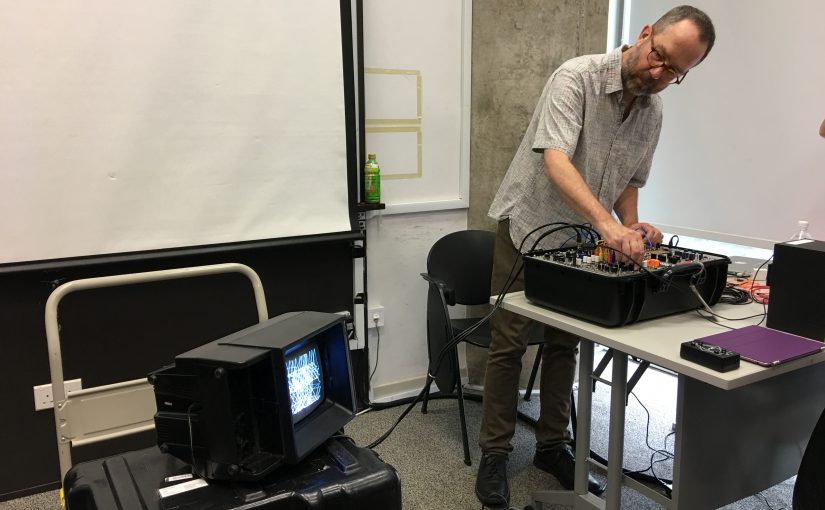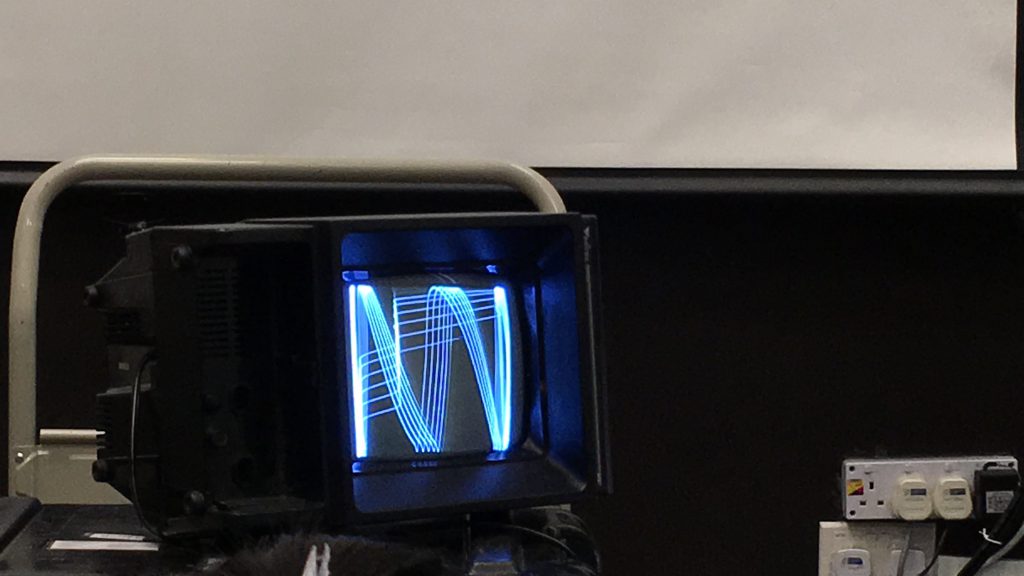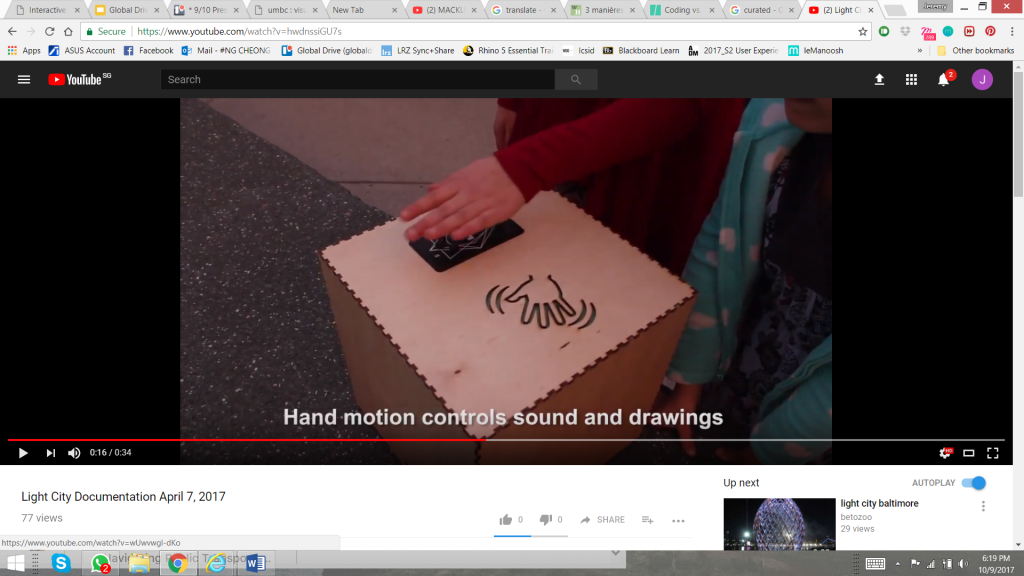Timothy Nohe gave an insightful presentation on Interactive Environments and Experience Design and shared some of his personal experiences and processes he went through for creating his interactive installation.
Timothy’ s interactive installation can be broken down into 3 steps: input, processing unit, output. The input is the users’ interaction with a touch sensitive box, which will then feed into the synthesizer which processes the data and outputs Visual Music (Electron Drawing), through speakers and a screen respectively. We were lucky to have an in-class demonstration. The 3 steps are condensed forms of a complex network of connections and wirings. I was confused when Timothy demonstrated how it ‘worked’. However, the actual installation is simplified in such a way that anyone can interact with it. This reminded me of the early computer system, which displayed only codes 0,1 or programming languages. But nowadays we have highly curated and crafted user interface that is understandable; comprehensible by everyone.
For his actual installation, Timothy made use of signifiers to indicate the affordances of the touch sensitive box. (Feedback: Visual Music- Electron drawing)
Timothy also highlighted the safety issues when operating those open-air installations and what are the important measures to be taken beforehand. Public liability, insurance should be established; equipment should be weather sealed so that it does not get damaged or poses any danger to the public; sound pollution to the surrounding should be assessed to see whether it is affecting the people or also the animals around.


